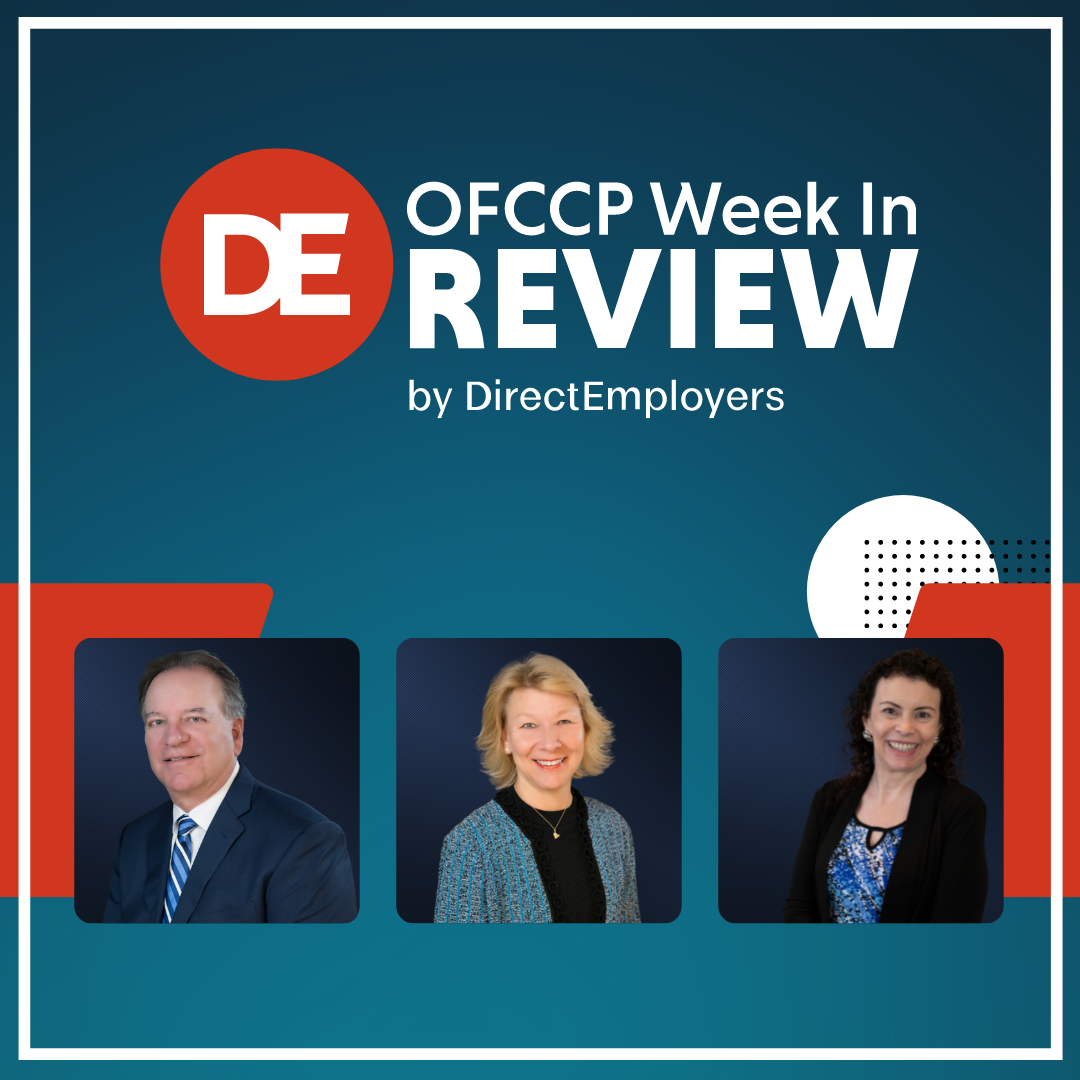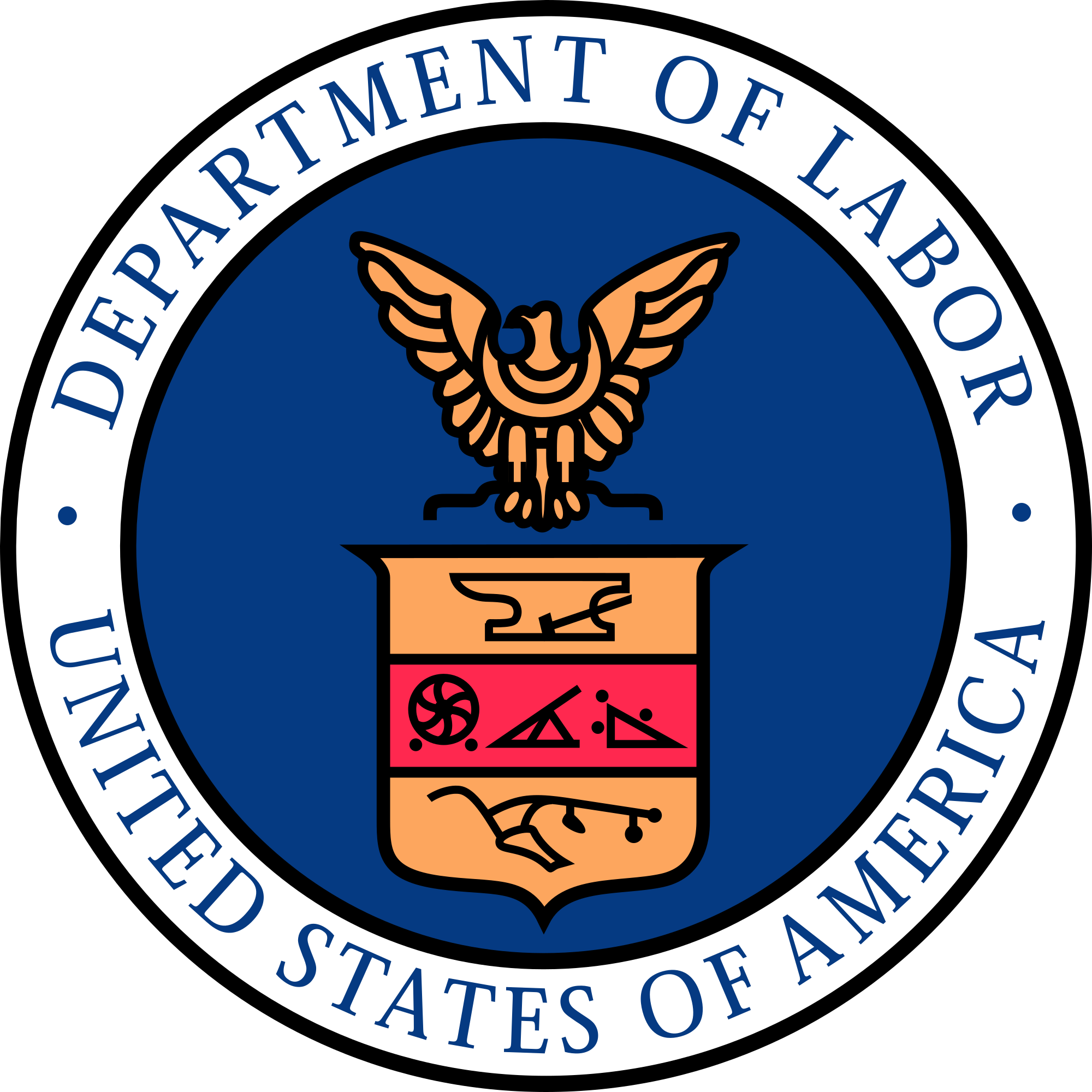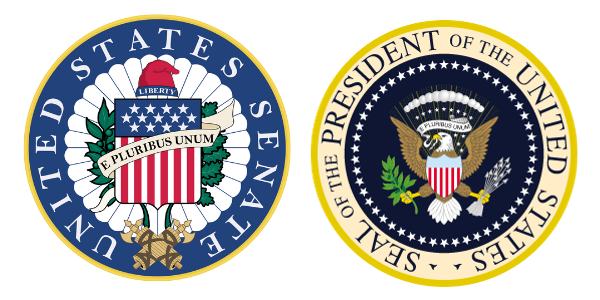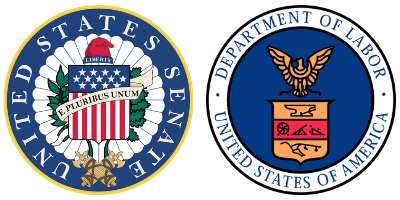
Wednesday, January 10, 2024: US DOL‘s WHD Published Its “Employee or Independent Contractor” Classification Final Rule

The WHD announced the Final Rule in a press release on Tuesday, the day before its official publication in the Federal Register. Early Tuesday morning, multiple news outlets reported about a Monday evening press call in which the Biden Administration discussed the upcoming Final Rule.
One of the odd legal circumstances surrounding this Rule is that administrative law requires that federal Executive Branch agencies, like the USDOL and its WHD, enforce the statute the Congress passed and write implementing Rules (i.e., “regulations” in street talk) explaining how the agencies will faithfully enforce the Congressional intent embodied in the authorizing statute. Federal Executive agencies may not just make up their own intent and embody that different intent in a Rule allegedly implementing the Congressional intent.
Punchline: The WHD is not “writing on a blank slate.” No federal court ever struck down the Trump Rule as inconsistent with Congress’ intent underlying the FLSA, despite legal challenge. It seems like a far stretch for the WHD to now publish and seek to enforce a different Rule interpreting a central term critical to enforcement of the FLSA (what is an “employee”). Without amendment to the FLSA, the agency interpretation needs to faithfully stay consistent over the life of the statute, until the Congress changes it. For the WHD to now argue that its new Rule is consistent with the Congressional intent (like it did when it published the Trump Rule in 2021) and that the Trump Rule did not properly interpret the FLSA seems at best two-faced, if not also legally challenged. How can a statute mean so many different things without Congressional change?
One is reminded of the famous colloquy in Lewis Carroll’s children’s book “Through the Looking Glass” when Alice wonders how people can twist words around to suit their self-interested and parochial objectives:
“When I use a word,” Humpty Dumpty said in rather a scornful tone, “it means just what I choose it to mean—neither more nor less.” “The question is,” said Alice, “whether you can make words mean so many different things.” “The question is,” said Humpty Dumpty, “which is to be master—that’s all.”
The Department posted a “Fact Sheet” and created a landing page with links to an FAQ and other resources corresponding to the Final Rule. WHD Administrator Jessica Looman also discussed the new Rule in a blog post.
What Are the Revised Criteria?
The Trump Administration Rule used an “economic realities” test that focused on two core factors:
- the nature and degree of the worker’s control over the work; and
- the worker’s opportunity for profit or loss.
If those two factors conflicted, then the DOL would consider three other factors:
- the amount of skill required for the work;
- the degree and permanence of the working relationship between the worker and the potential employer; and
- Whether the work is an integral part of the hiring company’s business.
The modified test under the new Biden Administration Final Rule has six factors and it uses a “totality-of-the-circumstances analysis” test in which the six factors do not have a predetermined weight and are considered in light of the economic reality of the whole activity. Those six factors are:
- Opportunity for profit or loss depending on managerial skill,
- Investments by the worker and the employer,
- Permanence of the work relationship,
- Nature and degree of control,
- Whether the work performed is integral to the employer’s business, and
- Skill and initiative.
Additional factors may be considered as well if they are relevant to whether the worker is in business for themself, as opposed to being economically dependent on the hiring entity for work.
Factors Not Considered
According to its “Fact Sheet,” the WHD also now maintains that certain factors are not relevant to whether an employment relationship exists:
- How the hiring entity refers to the worker. A worker may be an employee under the FLSA regardless of the title or label they are given;
- A worker who is paid “off the books” or receives a 1099 is not necessarily an independent contractor,
- Agreeing verbally or in writing to be classified as an independent contractor – including by signing an independent contractor agreement – does not render a worker an independent contractor;
- Other facts, such as the place where work is performed, whether a worker is licensed by state/local government, and the time or mode of pay are not determinative.
How We Got Here
The WHD published its proposed version of the Rule in the Federal Register on Thursday, October 13, 2022. We discussed that proposal and the previous Trump Administration Rule in detail here. The comment period on the proposal closed on December 13, 2022, with approximately 54,400 comments submitted. The WHD detailed its response to those comments in the preamble to the Final Rule here.
The DOL submitted the Final Rule to the White House Office of Management and Budget (“OMB”) for review on September 28, 2023, and the OMB approved it on January 2, 2024. In the Fall 2023 Regulatory Agenda, the WHD set November 2023 as its target date for publication of the Final Rule. Thus, the WHD published it approximately two months behind schedule.
Changes from the Proposed Rule
The Final Rule largely adopted the proposed version with some modifications. In the preamble to the Final Rule, the WHD discussed at length the changes in the Final Rule compared to its NPRM. More succinctly, in its FAQ the DOL stated that it, after considering the public comments, “made several adjustments to the analysis that was proposed in the NPRM, including revisions regarding the control factor and the investment factor. For example, the final rule states that actions taken by the potential employer for the sole purpose of complying with specific, applicable federal, state, tribal, or local law or regulation would not indicate ‘control.’ The final rule also advises that costs to a worker which are unilaterally imposed by a potential employer are not ‘investments’ indicative of independent contractor status.”
In addition, the FAQ details the similarities and differences between the Biden Administration Final Rule and the now-rescinded Trump Administration Rule.
Thursday, January 11, 2024: US DOL Adjusted Civil Monetary Penalties Per Inflation Adjustment Act

The 13-page Final Rule took effect on January 15, 2024. It applies to all penalties (a) the affected enforcement agency assesses after January 15, 2023, and (b) whose associated violations occurred after the applicable dates listed in the Final Rule.
The Inflation Adjustment Act requires certain agencies (not including OFCCP which has no penalty structure) to adjust some of the civil monetary penalties (and provides a cost-of-living formula) depending on the statute in question and notwithstanding the requirement in Section 553 of the Administrative Procedure Act otherwise requiring Rulemaking (public notice and the solicitation of comments from the public). The Department explained how it calculated the penalty adjustments here.
Applicable Agencies
The affected DOL Agencies that issue civil money penalties include:
- Employment and Training Administration;
- Office of Workers’ Compensation Programs;
- Office of the Secretary;
- Wage and Hour Division;
- Occupational Safety and Health Administration; and
- Mine Safety and Health Administration.
Rate Increases
Appendix 1 consists of a table that compares the new rates to last year’s adjustments by agency and statute. Our random sampling comparing some of the rate increases indicated an approximate 3.24 percent increase for most, but not all, rates.
See also, our story on last year’s adjustment.
In Brief
Monday, January 8, 2024: President Biden Formally Sent to Senate His Renomination of Julie Su for U.S. Labor Secretary

How We Got Here
On February 28, 2023, President Biden announced his initial nomination of Ms. Su for Secretary of Labor (see our story here). On April 26, 2023, the U.S. Senate Health, Education, Labor, and Pensions Committee voted along party lines, 11-10, to advance the nomination.
By mid-July 2023, it became apparent that the nomination would not advance in the United States Senate for want of a majority vote to confirm her nomination as at least key Senators (among others not publicly opposed) – Democrat Joe Manchin (WV) and Independent Krysten Sinema (AZ) who caucuses with the Democrats – refused to support her controversial nomination (see our story here).
Ms. Su has been the Acting Secretary of Labor since former Labor Secretary Marty Walsh left the Department of Labor on March 11, 2023. Earlier, she had become the Deputy Secretary of Labor following her Senate confirmation for that role on July 13, 2021. On September 21, 2023, the U.S. Government Accountability Office opined that Su is lawfully serving as the Acting Secretary of Labor under the statute that created the position of Deputy Secretary of Labor – 29 U.S.C. §552 – and that the time limitations on acting service contained in the Federal Vacancies Reform Act of 1998 do not apply to the Acting Secretary’s service (see our story here).
On January 3, 2024, the Senate formally sent the initial February 2023 nomination of Ms. Su back to the President.
Tuesday, January 9, 2024: President’s Nomination of Rodriguez to Head US DOL ETA Continued to Flounder on Senate Floor

We last reported on the status of this nomination in our December 4, 2023 edition, where we reported that the Senate voted 44-51 against advancing the nomination. All Republicans taking part voted against it as did Democratic Senators Joe Manchin (WV) and Bob Menendez (NJ). One Republican and four Democrats did not vote on that motion. In a procedural move, Senator Schumer then switched his vote to “No” to allow for another vote at a later date. Just before the holiday break, on December 18, Schumer successfully then filed a second (cloture) motion to end Senate debate and advance the nomination to an up or down Senate Floor Vote. It then looked like another vote attempt would happen when the Senate reconvened this month after the holiday recess. However, on Tuesday, Senator Schumer withdrew his motion to advance the nomination.
President Biden sent this nomination to the Senate on January 23, 2023. On March 28, the Senate Committee on Health, Education, Labor, and Pensions Committee voted along party lines (11-10) to advance the nomination to the full Senate. As of our WIR deadline, the Senate had not yet sent this nomination back to the President.
Wednesday, January 10, 2024: US EEOC Announced the Official Close of 2022 EEO-1 Component 1 Data Collection

While the EEOC will not accept any additional 2022 EEO-1 Component 1 reports, filers may continue to log in to the EEO-1 Component 1 Online Filing System (OFS) to access historical report(s), the announcement noted.
Thursday, January 11, 2024: OMB Approved FAR Council Proposed Rule on “Pay Equity and Transparency in Federal Contracting”

In our previous story, we explained that the Proposed Rule would implement President Biden’s Executive Order (“EO”) 14069, which he issued on March 15, 2022 (See the third paragraph of our story here for details on that EO). According to the description on RegInfo.gov, the proposal, if finalized, would “limit or prohibit contractors and subcontractors from seeking and considering information about job applicants’ existing or past compensation when making employment decisions for certain positions.” It would also “require contractors and subcontractors to disclose the compensation or range thereof to be offered to the hired applicant in job announcements for certain positions.”
The Fall 2023 Regulatory Agenda set February 2024 as the target date for publication of this proposal. As of our WIR deadline, the FAR Council had not revealed a specific date for publication.
Looking Ahead:
Upcoming Date Reminders
There are two NEW items added to our calendar this week:
November 2023: EEOC’s (now overdue) target date for publication of an Interim Final Rule to Amend Procedural & Administrative Regulations to Include the PWFA (RIN: 3046-AB31)
November 2023: EEOC’s target date (now overdue) to publish its NPRM to amend its regulations on exemptions to certain recordkeeping and reporting requirements (RIN: 3046-AB28)
December 29, 2023: Statutory deadline (now overdue) for EEOC to finalize regulations to enforce the Pregnant Workers Fairness Act (RIN: 3046-AB30); EEOC submitted its Final Rule for OMB review on December 27, 2023
December 2023: U.S. OSHA’s current target date (now overdue) to publish its Final Rule on Occupational Exposure to COVID-19 in Healthcare Settings (RIN: 1218-AD36)
January 15, 2024: Statutory deadline for EEOC’s (now overdue) publication of its Final Rule on the “2024 Adjustment of the Penalty for Violation of EEOC’s Notice Posting Requirement” (RIN: 3046-AB26)
January 22, 2024: Effective date of FAR Council Final Rule mandating Project Labor (i.e. Union) Agreements on large federal construction projects
January 29, 2024: Comment deadline on US DOL VETS request to renew currently approved VETS-4212 reporting requirement
February 2, 2024: Expiration date for Continuing Resolution to fund certain government agencies – including the US DOL, the EEOC, & the NLRB – at current levels
February 12, 2024: Comment deadline for OFCCP’s request to renew OMB approval of its online Supply & Service Contractor Portal interface, including new requirement for contractors to provide UEI numbers for the parent company and its establishments
February 12, 2024: Effective date for US DOL WHD Final Rule on “Nondisplacement of Qualified Workers Under Service Contracts”
February 20, 2024: Deadline for comments on US DOL’s Request for Information seeking public input on whether to revise the list of Schedule A job classifications that do not require permanent labor certifications to include occupations in Science, Technology, Engineering & Mathematics (“STEM”) & other non-STEM occupations.
February 26, 2024: Effective date of NLRB’s Final Rule on Standard for Determining Joint-Employer Status under the NLRA (previous December 26, 2023, effective date extended)
February 2024: FAR Council’s target date to publish Proposed Rule on “Pay Equity and Transparency in Federal Contracting”; NEW – OMB approved this Proposed Rule on January 11, 2024, clearing the way for publication
NEW March 11, 2024: Effective date for U.S. DOL WHD’s Final Rule on Employee or Independent Contractor Classification Under the Fair Labor Standards Act
March 2024: EEOC’s target date for proposal to amend its regulations regarding the electronic posting of the “Know Your Rights” Poster (RIN: 3046-AB29)
March 2024: U.S. NLRB’s target date for its Final Election Protection Rule (RIN: 3142-AA22)
April 3 – April 5, 2024: DEAMcon24 New Orleans – The DEAMcon24 Program is now live!
April 2024: U.S. DOL WHD’s current target date for its Final Rule on Defining and Delimiting the Exemptions for Executive, Administrative, Professional, Outside Sales, and Computer Employees (Overtime Rule) (RIN: 1235-AA39)
September 2024: OFCCP’s current target date for its Notice of Proposed Rulemaking to “Modernize” Supply & Service Contractor Regulations (RIN: 1250-AA13)
September 2024: OFCCP’s current target date for its Final Rule on “Technical Amendments” to Update Jurisdictional Thresholds & Remove Gender Assumptive Pronouns (RIN: 1250-AA16)
September 2024: EEOC’s anticipated date for amending its FOIA procedures to add fees for electronic disclosure of records (RIN: 3046-AB20).
September 2024: U.S. DOL WHD’s target date to publish an NPRM on “Employment of Workers With Disabilities Under Special Certificates” (Subminimum Wage Rule) (RIN: 1235-AA14)
THIS COLUMN IS MEANT TO ASSIST IN A GENERAL UNDERSTANDING OF THE CURRENT LAW AND PRACTICE RELATING TO OFCCP. IT IS NOT TO BE REGARDED AS LEGAL ADVICE. COMPANIES OR INDIVIDUALS WITH PARTICULAR QUESTIONS SHOULD SEEK ADVICE OF COUNSEL.
SUBSCRIBE.
Subscribe to receive alerts, news and updates on all things related to OFCCP compliance as it applies to federal contractors.
OFCCP Compliance Text Alerts
Get OFCCP compliance alerts on your cell phone. Text the word compliance to 18668693326 and confirm your subscription. Provider message and data rates may apply.


